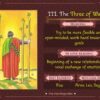Felipe dos Santos, though a lesser-known figure in the grand narrative of Brazilian history, stands as a symbol of resistance and resilience. His story, often overshadowed by more prominent Brazilian independence leaders, provides a unique window into the struggles of colonial-era Brazil and the aspirations of those who longed for freedom from Portuguese rule.
This article revisits the life of Felipe dos Santos and his role in the resistance against colonial oppression, emphasizing his legacy and why his story remains relevant in understanding Brazil’s journey to sovereignty.
Early Life and the Colonial Landscape
Felipe dos Santos was born in the late 17th century, during a time when Brazil was under Portuguese rule, and the colony’s resources were exploited for the benefit of the Portuguese crown. With a society deeply divided between landowners, laborers, and slaves, Felipe emerged from the mining regions of Minas Gerais, a state abundant in gold and precious minerals. This mineral wealth drew attention from the Portuguese, who imposed strict taxes and laws on the population, ensuring that the majority of profits flowed back to Europe.
Life in Minas Gerais was marked by tensions between the colonizers and the local population. The crown heavily taxed gold mining, taking advantage of the precious resource that was essential to the livelihoods of people in the region. The oppressive taxation system and restrictions on trade created an atmosphere ripe for dissent. Felipe dos Santos, though not a wealthy or powerful man, was highly aware of the injustices that his fellow citizens faced. He emerged as a voice of the oppressed, symbolizing the common man’s fight against colonial exploitation.
The Revolt Against Oppression
The oppressive regime of the Portuguese crown spurred Felipe dos Santos into action, and he soon became a central figure in one of Brazil’s earliest uprisings. The local population, including miners, artisans, and farmers, were heavily burdened by taxes. These taxes, notably the “quinto” (a 20% tax on gold), strained the population and hindered economic progress, leading to widespread resentment toward colonial authorities.

In 1720, Santos spearheaded a revolt in Vila Rica (now Ouro Preto), a town that had grown prosperous from its mining activities but was stifled by harsh regulations. The revolt, known as the Vila Rica Revolt or Felipe dos Santos’ Revolt, gathered momentum as people from various walks of life joined forces. Santos called for the elimination of the “quinto” and for greater autonomy from the crown’s economic restrictions. His demands resonated with a population yearning for the freedom to build their own economic futures.
Santos’ bravery in confronting the colonial powers was emblematic of a broader desire for justice. He was not a nobleman or military leader but rather a commoner, an ordinary man who risked his life for the rights of his fellow citizens. His actions challenged the established order and inspired others to consider the possibility of self-determination. This uprising was one of the earliest documented resistance movements against colonial rule in Brazil, predating the more widely known Inconfidência Mineira of 1789.
The Aftermath and Felipe dos Santos’ Legacy
While the Vila Rica Revolt initially gathered significant support, it was ultimately suppressed. The Portuguese authorities responded swiftly and with force, deploying soldiers to quash the uprising and reassert control over the region. Felipe dos Santos was arrested and tried, accused of being the ringleader of the rebellion. The crown was keen on setting an example to deter further resistance, and Felipe was sentenced to death in a public execution, a move intended to instill fear among the local population.
Felipe dos Santos was executed in a brutal fashion, his death intended to serve as a warning against defying colonial rule. However, his legacy endured, and he became a martyr in the eyes of those who continued to resist Portuguese control. His death highlighted the extremes to which the colonial authorities would go to maintain power, but it also underscored the resilience of those who dared to envision a different future for Brazil.
Significance in Brazilian Independence Movements
Though Felipe dos Santos did not live to see Brazil gain independence, his revolt was a precursor to later movements that would ultimately lead to the country’s freedom. The Vila Rica Revolt signaled the beginning of a long road toward independence, marked by various uprisings and figures who shared Felipe’s vision of a liberated Brazil. His story inspired others, notably during the Inconfidência Mineira, which included figures like Tiradentes, who is often remembered as one of the most famous Brazilian revolutionaries.
Felipe dos Santos’ sacrifice reminded future generations that even the humblest individual could challenge the powerful. His actions served as a blueprint for civil disobedience and resistance, with his name becoming a symbol of defiance. His resistance showcased the power of ordinary citizens to demand justice, even at great personal cost. In a sense, Felipe dos Santos planted the seeds of resistance that would later flourish as Brazil’s independence movement took shape in the early 19th century.
Felipe dos Santos in Modern Brazilian Memory
Today, Felipe dos Santos is regarded as a local hero in Minas Gerais, though his story is not as widely known across Brazil. The legacy of his revolt has been memorialized in the state of Minas Gerais, where his life is celebrated as a symbol of early resistance to colonial rule. Statues, plaques, and historical sites in Ouro Preto and surrounding areas serve as reminders of his courage. Despite his relative obscurity in the national narrative, Felipe dos Santos’ contributions remain significant for understanding the spirit of defiance that paved the way for independence.
His story is taught in some regional history classes, particularly in Minas Gerais, where educators seek to ensure that students understand the roots of Brazil’s quest for independence. His role is also a reminder of the complexities of Brazilian history, highlighting the contributions of individuals beyond the elites who are more frequently celebrated. Felipe dos Santos serves as a testament to the sacrifices made by ordinary people who dared to challenge colonial power and envision a different future.

Conclusion: The Enduring Legacy of Felipe dos Santos
Felipe dos Santos’ life and death hold profound significance in Brazil’s history of resistance. Though he did not live to witness Brazil’s eventual independence from Portuguese rule, his actions set a precedent for rebellion and laid the groundwork for later movements. Santos’ revolt was an act of bravery and a clear stance against exploitation, embodying the spirit of defiance that fueled Brazil’s quest for freedom.
Today, Felipe dos Santos serves as a symbol of courage and resilience, especially for the people of Minas Gerais. He reminds us that the fight for justice and self-determination often begins with the efforts of ordinary individuals who refuse to accept oppression. In honoring his memory, Brazil remembers a hero who, despite the odds, stood up for his people and became a foundational figure in the nation’s long journey toward independence.



